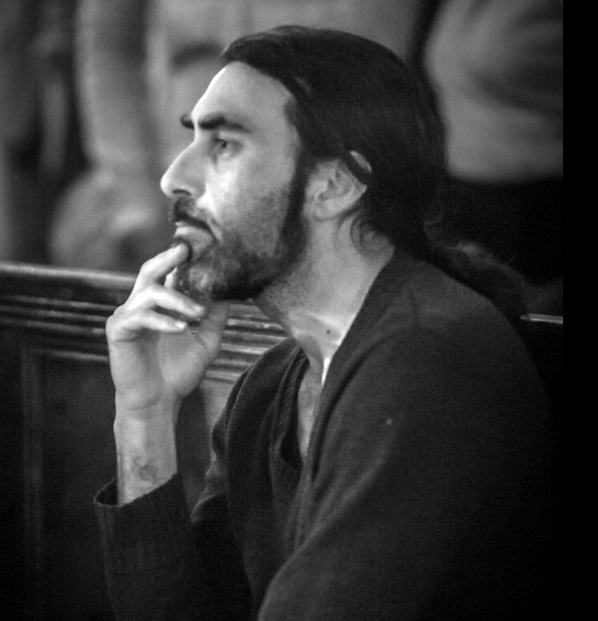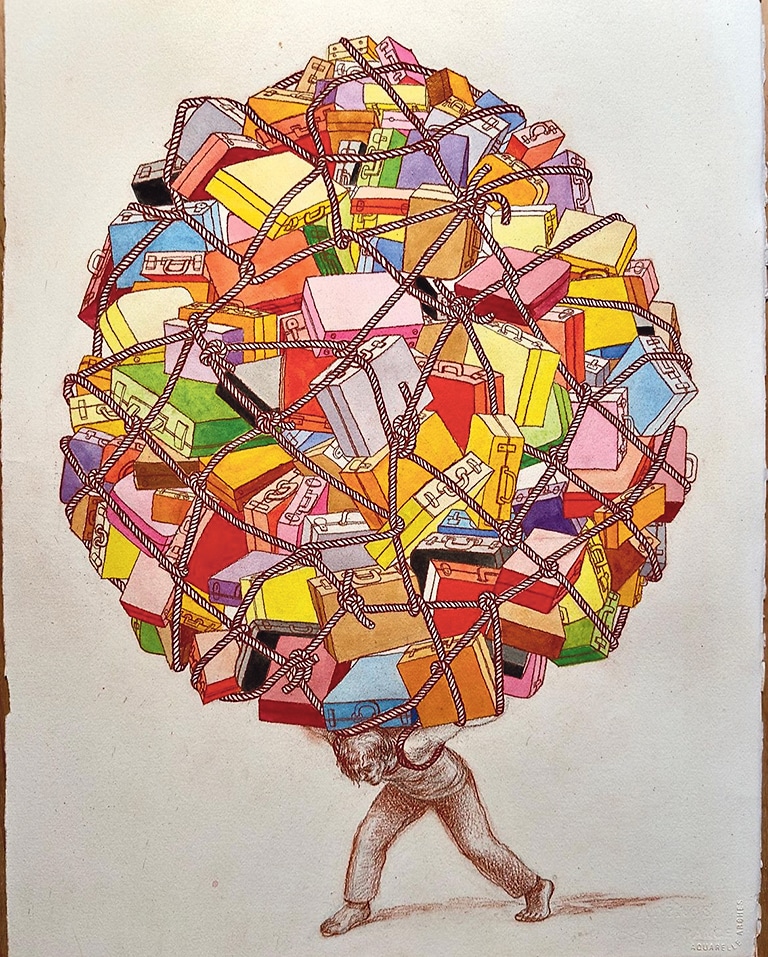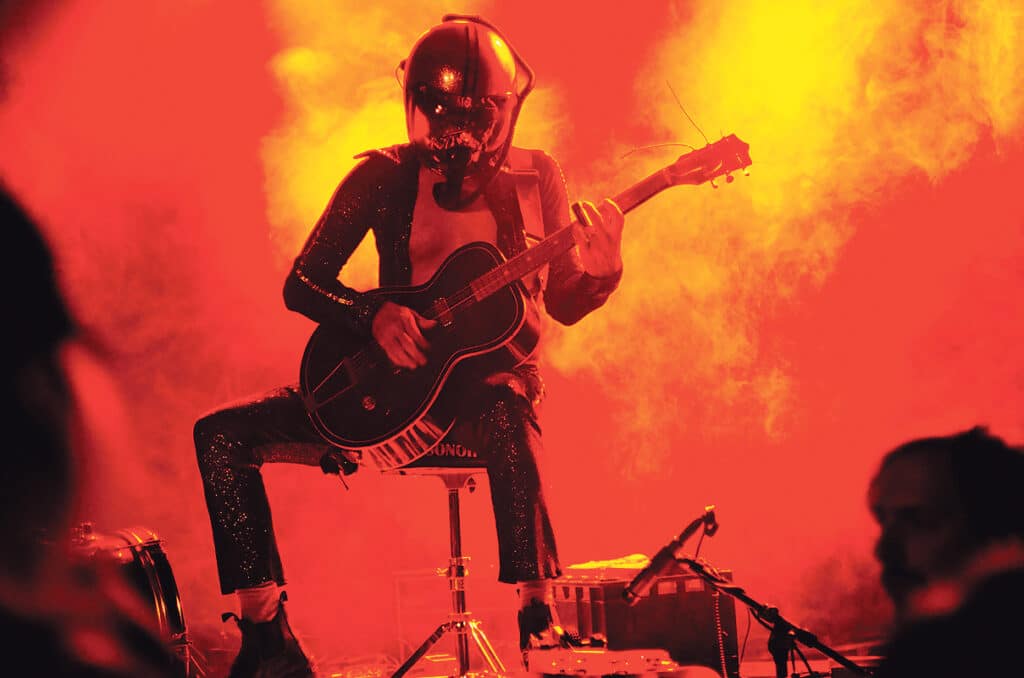
The shape of things
James Waller is an Australian born artist and poet based in West Cork. Through this column James explores the world of art, introducing the reader to major works of art and artists and reflecting on what makes them so engaging.
James offers a range of studio-based courses for children and adults in Classical painting, drawing and printmaking at Clonakilty School of Painting. See www.paintingschool.
jameswaller.org for details.
A monochrome figure carries a netted bundle of colourful baggage, many times his own weight and mass, on his bent, drawn back. The image is resonant of medieval depictions of ‘Folly,’ which often showed the Fool with the world on his shoulders, or of classical depictions of the mighty Atlas, holding up the world on his bent back for his sins. But the figure in this image is neither Fool nor Greek God. The work, titled ‘Diaspora,’ is a watercolour from 2023 by British artist Paul Harbutt (1947-), and its title, in combination with the baggage it depicts, intimates its meaning.
‘Diaspora,’ is part of a retrospective of Harbutt’s graphic work which I had the pleasure of seeing in Antwerp over Easter, at Museum De Reede, a gem of a gallery devoted to works on paper. Harbutt’s show, titled ‘Odyssey,’ displayed on the first floor mezzanine, acted as a contemporary counterpoint to a show of etchings by Francisco Goya (1746-1828), a few steps lower on the first floor. Goya’s dark, brooding prints are amongst the most outstanding in the history of printmaking. On show in the museum were a selection from three different series: the ‘Disasters of War,’ the ‘Follies,’ and the ‘Bullfights,’ all of which held fascinating resonance with Paul Harbutt’s work on the mezzanine above.

Baggage, both physical and psychological has never been more potent a symbol, and the disasters of war seem more a constant now than ever before. Where Goya’s work evinces the stark terror and violence of warfare, however, Harbutt’s drawings and prints hold the burden of loss and despair in playful, yet poignant, relief. Images such as ‘Man as a Suitcase,’ ‘Rain of Stones,’ ‘The Flight,’ and ‘Field of Despair,’ are given levity and hope by the inclusion of a consoling panda bear, who accompanies Harbutt’s protagonist either by his side, or hanging from his tower of baggage. Levity is of course already present in the incongruity of the images; one cannot help but smile at the impossible task of carrying, like an ant, a hundred netted bags on one’s back. The very playfulness of Harbutt’s drawings lightens the load, whilst at the same time inviting us to reflect.
Another important motif in Harbutt’s ‘Odyssey,’ is that of the bull. Goya’s etchings of bullfights on the level below found, for me a poignant counterpoint in Harbutt’s ‘KC consoling the Bull,’ ‘Loving the Bull,’ and ‘Animal Cruelty.’ Goya’s dark and beautiful etchings prefigured Pablo Picasso’s later fascination with the theme. Picasso went much further than Goya, however, and made of the bull a stand-in for his own masculine psyche. The bull, and by extension the Minotaur, were sometimes blind, sometimes sexual, and sometimes violent protagonists in Picasso’s work. There is no mistaking Harbutt’s formal debt to Picasso, but in Harbutt’s drawings we see the image of the bull as sexual aggressor and violent beast turned on its head. Where Goya and Picasso rage, Harbutt heals. There is continuity of form, but also transformation of psyche, energy, intent.
Discovering new work is, for me, one of the joys of travel. One need not go so far as Antwerp, however, to discover something fresh and energising. Blue House Gallery in Schull opened its exhibition season earlier this month with a group show of gallery artists, followed by a mix of solo and group shows through its myriad of rooms and levels. The gallery has, like Museum de Reede, a small ‘museum’ quality to it; sensitive curation, excellent hanging, and a diversity of artists through multiple rooms give the visitor a sense of discovery and an element of surprise.
Cnoc Buí in Union Hall has also launched its 2024 programme with work by Lesley Cox, Tom Weld and Sandy Hicks currently on show. The arts centre has, in a short space of time, gained an excellent reputation and is well worth a visit as the weather warms. So if the continent is too much of an odyssey at this point in time let the sun and the road guide you to the treasures to be found in West Cork’s galleries. We don’t have many so we need to treasure them in turn.


